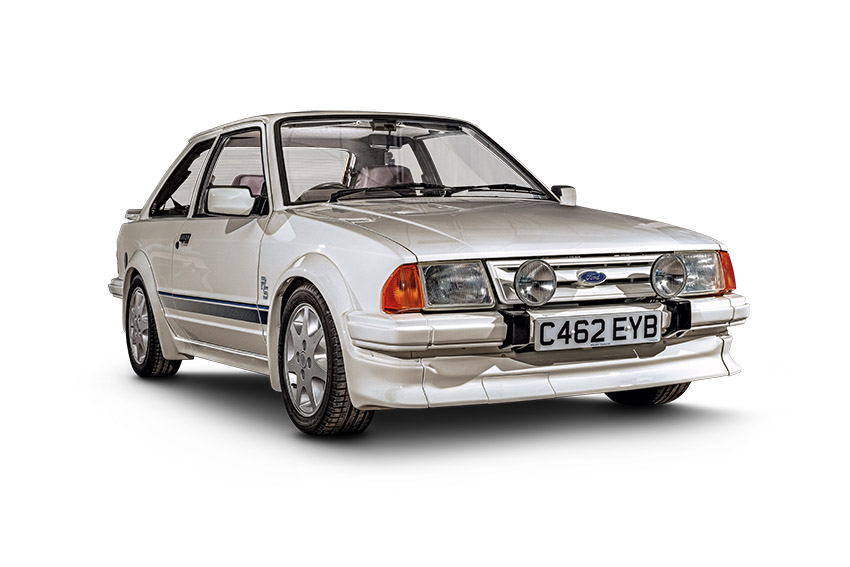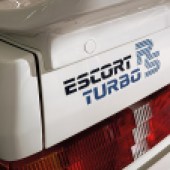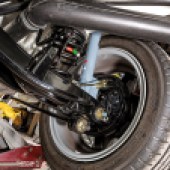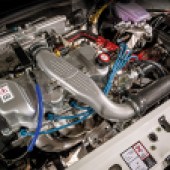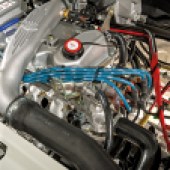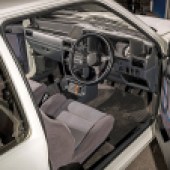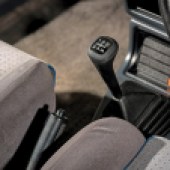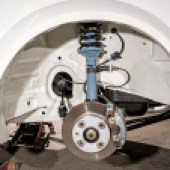Missed out on Lady Di’s £650k Ford Escort RS Turbo S1? Thankfully you don’t have to spend that much to buy a good one… here’s our guide to the original, and the best Escort RS Turbo.
Guide from Fast Ford magazine. Words: Dan Williamson.
Ford Escort RS Turbo S1 history
August 1980 – Escort Mk3 begins production at Halewood (UK) and Saarlouis (Germany).
November 1980 – Escort XR3 launched in UK, as front-wheel-drive three-door hatchback with 95bhp 1.6 CVH engine, Weber carburettor, four-speed gearbox and sports suspension.
February 1982 – XR3 continues with five-speed gearbox as standard.
October 1982 – XR3i and RS1600i production begins at Saarlouis, both based on XR3 but with Bosch fuel injection. SVE-tuned XR3i has 104bhp, revised suspension, brakes and cabin. German RS1600i has 113bhp, unique front suspension, 6x15in alloy wheels, new front and rear spoilers, decals and Scheel seats.
May 1983 – New Escort Mk3 bodyshell including revised front suspension mounting points, larger (48-litre) fuel tank, repositioned fuel pump, and smoother upholstery.
October 1984 – Escort RS Turbo announced at Paris motor show, developed by Ford Special Vehicle Engineering (SVE) for Group A motorsport homologation, requiring 5000 examples.
15 December 1984 – Saarlouis production begins of Escort RS Turbo, based on XR3i but with Garrett T3 turbo, Bosch KE-Jetronic fuel injection, viscous-coupling limited-slip differential, RS1600i-type front tie bars, Orion 12mm rear anti-roll bar, Diamond White paintwork, colour-coded bodykit, driving lamps, 15in alloy wheels, blue decals, and Recaro seats. Standard or extra-cost Custom Pack available.
20 December 1985 – Escort RS Turbo Series One production ends, after 8604 built, including 5576 UK sales (all but three factory Black examples were white).
Why you want a Ford Escort RS Turbo S1
- Cooler than a snowman surfing on an iceberg, the so-white Series One hits the 1980s’ fashion spot. Park it alongside a Ferrari, and the prancing horse will be overridden by the old Blue Oval.
- Motorsport homologation – and significant racetrack success – means the Series One has secured its place in Ford history.
- It has to be said: the Series One is the most investable of all front-wheel-drive Escorts, and you’ll certainly not lose cash by enjoying this fast Ford.
Why you don’t want one
- RS Turbos aren’t exactly fast. A stock 130bhp Series One is left for dead by modern hot hatchbacks, and making it faster simply hammers down the value.
- Your neighbours won’t be impressed by your £30k Ford Escort; they’ll see it as either an Essex boy-racer’s ride or just some old banger with an outdated registration plate.
- RS tax is real, and you’ll find yourself splashing out huge sums of money for simple stuff like bits of trim you’d see in an Escort van.
Ford Escort RS Turbo S1 key points
- Identity – Originality is key. Only genuine Series One RS Turbos are worth big money – be very wary of a car with questionable history, specification or VIN.
- Exterior – RS Turbos were enormous rotters, so check the body everywhere – inner wings, chassis rails, floorpan, roof, beneath carpets, behind bodykit and so on. Extensive corrosion can still kill a Series One shell.
- Interior – Mostly standard XR3i kit, the Series One cockpit is tricky to find in mint condition. Recaros tend to sag, and an uncracked dashboard is a four-figure treasure.
- Engine – CVHs can be rattly and smoky, but beware of heavy knocking noises and blue plumes under load – suggesting a blown turbo or knackered pistons and/or rings.
- Transmission – Ensure it’s a pukka Series One gearbox with LSD, avoid rumbling or crunching synchros, and check for clutch slip – a very common RS Turbo complaint.
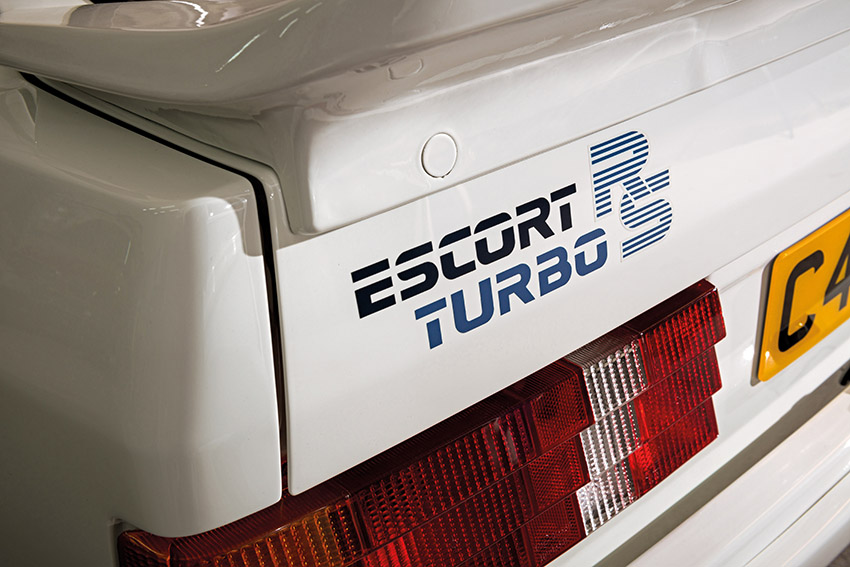
What to look for when buying the Ford Escort RS Turbo S1
Identity
Don’t buy a Ford Escort RS Turbo S1 without checking its identity. Not just an online vehicle history check (which is, of course, important for any expensive motor) but a thorough inspection of the entire car. If you can, find an Escort expert and take them along to help.
Series Ones were (and still are) faked/rung/reshelled a lot even by fast Ford standards, so don’t be fooled by something dodgy.
Begin with the VIN plate on the bonnet slam panel, making sure it tallies with the digits on the log book, the stampings in the floor beside the driver’s seat (beneath a flap in the carpet) and the body-coloured build plate (also on the slam panel). The VIN should read WF0BXXGCAB, followed by two letters relating to build date and numbers that correspond with the engine code (also seen on the cylinder block).
The shell itself should be a late-model Mk3 (built from May 1983-onwards) with single-bolt front strut tops and longer rain gutters on the roof: no RS Turbo had the shorter early gutters. A genuine Series One should also include a double-skinned battery tray, triple-skinned steel in the engine bay (feel it through a hole pressed into the chassis at the inner wing) and unique front anti-roll bar mounts. Ensure there’s a roughly-hacked cut-out in the front panel for the radiator (replicas tend to be too neat), and that there are factory-fitted captive nuts on the bulkhead to attach the ECU.
All RS Turbos had an Orion-type rear anti-roll bar with factory-made mounts, which tend to look awkward when added afterwards to a fake. There should also be a unique rivet in the spare wheel well for a filler neck stabiliser, plus a pair of grommets in the rear valance just below the back bumper.
Bronze tinted glass was standard on all Series Ones, along with opening rear windows. The majority were specified with the optional Custom Pack, which included electric front windows and central locking (easy to retrofit) plus bronze-tinted glass sunroof – harder to add to a replica.
It’s also worth checking the date stamps on the windows and wheels match up with the car’s build date.
And if you find a Series One reputedly factory-finished in any colour other than Diamond White, be very dubious. Only three non-white Series Ones were built by Ford – all in Black. A few RS Turbos were repainted in different shades (such as one in Mercury Grey, red Datapost racers, and a blue car from TV show CATS Eyes, which ended its life in a lake), but none were Ford-produced.
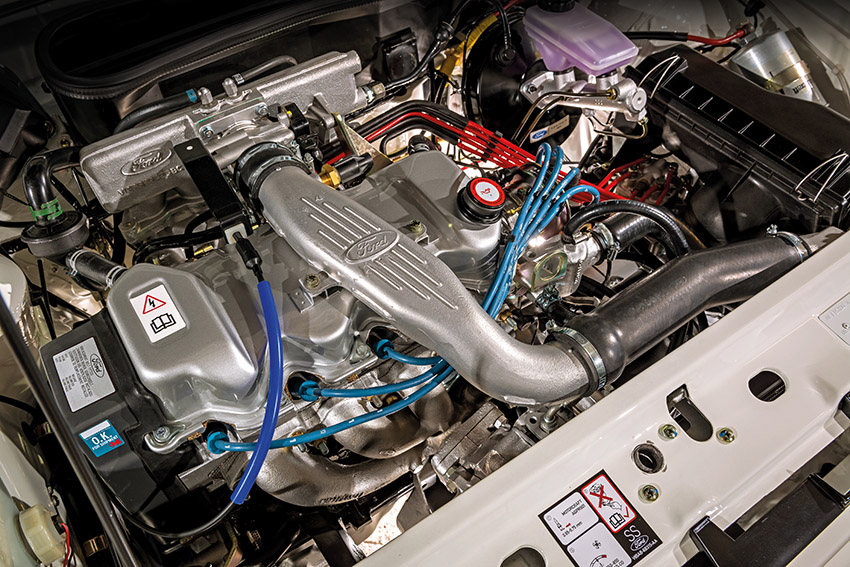
Engine & Transmission
CVH engines weren’t particularly durable or refined when new; 30-odd years of thrash and boost means most have been rebuilt and/or are now knackered. So unless you see recent receipts for reconditioning, expect everything to need close examination.
Excessive noise will be most obvious. Typically, you’ll hear tapping from the top end, usually from the hydraulic lifters (oil changes are best every 3000-to-6000 miles) but possibly also a worn camshaft if it’s clattering inside the cylinder head. They’re not major problems, but beware of knocking from the bottom end, caused by worn crank/bearings – very bad news.
Check for blue smoke from the exhaust – at start-up it’s probably valve stem seals (typical of a CVH) but under load more likely failed pistons/rings or turbocharger; remove the inlet hose and check the turbo for play in the shaft. Oil splashed around the engine bay could be from a leaking cam cover, but be suspicious if it’s blowing out of the oil filler cap; a rebuild may be impending…
White smoke is also a worry, suggesting a blown head gasket or cracked head; beware an engine running hot or with oil in the coolant. If the antifreeze looks fresh, it’s perhaps disguising a head gasket fault, or – finger crossed – shows signs of recent servicing, ideally with a new genuine-Ford water pump. Ask the seller to show receipts.
Poor running is a typical Series One trait, and often attributed to the RS Turbo’s Bosch mechanical fuel injection (MFi) setup, particularly the fuel metering unit, which is expensive to replace, tricky to adjust and easily slips out of calibration. Common complaints are misfires, sluggish performance and difficulty starting when warm. But there are loads of other potential culprits, such as dirty or faulty sensors and relays, a tired actuator limiting boost, air leaks and collapsed hoses resulting in low power, and tired wiring causing chaos.
Check the wiring loom for damage, chafing, bad joints and corrosion – which at best will lead to dodgy electrical gadgets or poor starting; at worse an underbonnet fire. New looms can be pricey but worthwhile for safety and reliability.
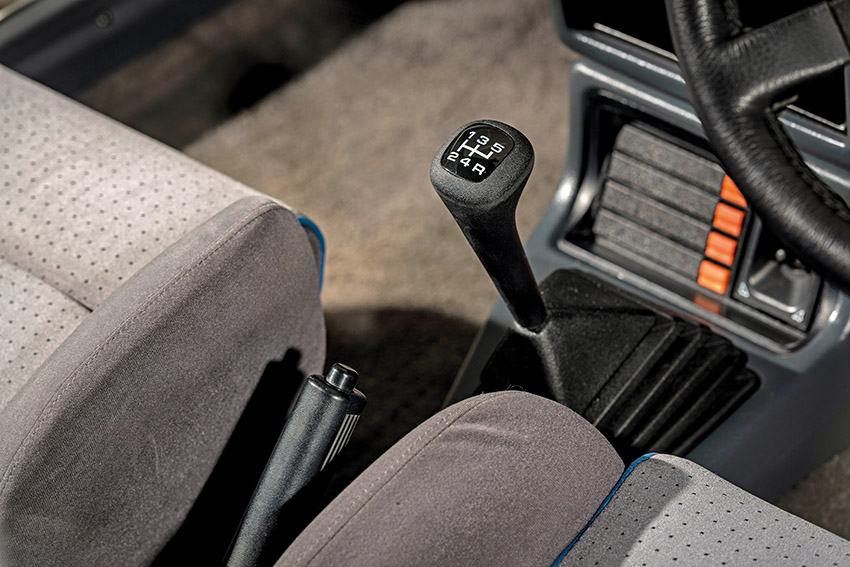
Inspect the fuel pump and carrier to make sure they’re not rotten or held together with cable ties. Look beneath the bulkhead for evidence of fuse box repairs or burnt-out relays, and remove the glovebox to view the wiring beneath the battery tray.
Don’t be surprised to find evidence of a supposedly-standard Series One having been put back to stock after a lifetime of modifications; original-looking examples are most valuable, but if you enjoy driving, a chip and stainless exhaust still make sense. Better still, an EFi (electronic fuel injection) conversion is more reliable, but will certainly harm an RS Turbo’s value.
The RS Turbo was the first mass-market front-wheel-drive car with a viscous-coupling limited-slip differential, but it wasn’t the same gearbox used in rally versions. Instead, the Series One’s B5 ’box was an uprated XR3i component, with bracing ribs, stronger bearings, bigger teeth and 4.27:1 final drive ratio.
Over the years, many RS Turbos have had broken gearboxes replaced with cheaper Escort/Orion diesel five-speed units, so check the proper parts are in place. Luckily, second-hand RS gearboxes are still available, and rebuild kits aren’t too pricey; it’s also feasible to fit Series Two components inside an S1’s casing.
It’s common for the gearshift to feel floppy, often due to a tired gear linkage – an easy repair. Difficulty selecting gears is more of a concern; it could be a simple clutch ratchet fault (cheap to fix) or failure of the synchromesh rings – especially if the gears are crunching between second and third; a rebuild will be needed.
Clutch problems may also be to blame, particularly if there’s an excessively low biting point or clutch slip under load (floor the throttle in fourth gear to ensure the road speed increases as the engine revs rise). The standard S1 clutch can’t cope with more than 170bhp, although many have been swapped for the larger Series Two clutch and flywheel.
Nasty transmission noises tend to mean an expensive repair is required: rumbling during driving points to impending mainshaft failure, while growling suggests the driveshafts are worn (and in need to repair before they wreck the gearbox). Happily, clicking on full steering lock means the CV joints need to be replaced; a cheap and easy job.
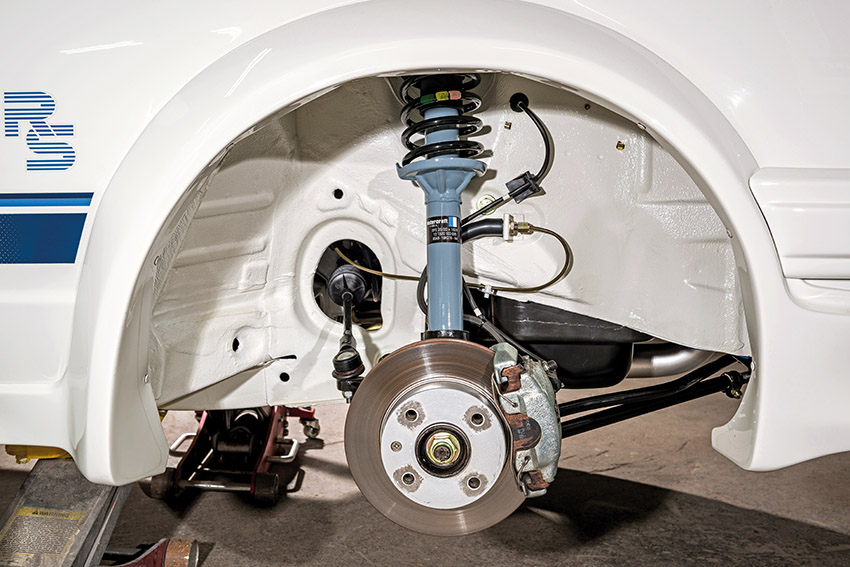
Suspension & Brakes
Series One front suspension had RS1600i-style tie-bars with separate 16mm anti-roll bar, plus an Orion-sourced 12mm rear anti-roll bar; if they’re not in place, start asking questions about the car’s authenticity; get ready to walk away.
Check the tie bars aren’t bent out of shape because they’re pretty weak, and OE Ford replacement joints are no longer available. Listen for vibrations and clattering from the suspension, suggesting something loose such as a snapped spring. It may also be a broken steering column bush, which is a cheap fix. Rumbling is most likely due to worn wheel bearings.
Series One roadholding was reputed among Ford engineers to be unpredictable, mainly due to the snatchiness of the LSD. There’s no power steering, of course, but the handling should feel direct, albeit not up to the standards of a modern ST. If the Escort feels sloppy, suspect worn components or – worse still – floorpan corrosion. Perished suspension bushes are a common cause for vagueness, especially in the rear wishbones. Polyurethane replacements are the solution, preferably Powerflex, which are available in factory-look black for concours contenders.
It’s typical to find aftermarket suspension already in place. Don’t be dissuaded if you see good-quality dampers (such as Bilstein or Koni) and lowering springs with no more than a 25mm drop; be concerned if they’re cheap Chinese coilovers, especially if mated to low-rent tyres.
Series One brakes were stock XR3i 239mm vented front discs and 203mm rear drums, which were barely up to the job when new. If the car’s still on standard stoppers, ensure they’re not juddering through the pedal, which typically means the discs and pads need to be replaced; but if they’re pulling to one side, a calliper is probably sticking.
The rear drums may also be seized on or off (check by jacking up the back of the car and spinning the wheels while getting an assistant to apply the footbrake and handbrake), or leaking from a wheel cylinder. Inspect the brake lines for corrosion and the hoses for splits or ballooning.
Fortunately, brake parts are cheap and easy to source, being shared with lesser models. For keen drivers, OE-looking upgrades are preferable, and parts such as Cosworth 4×4 front callipers with RWD rears fit behind the standard seven-spoke RS alloys to maintain the concours look.
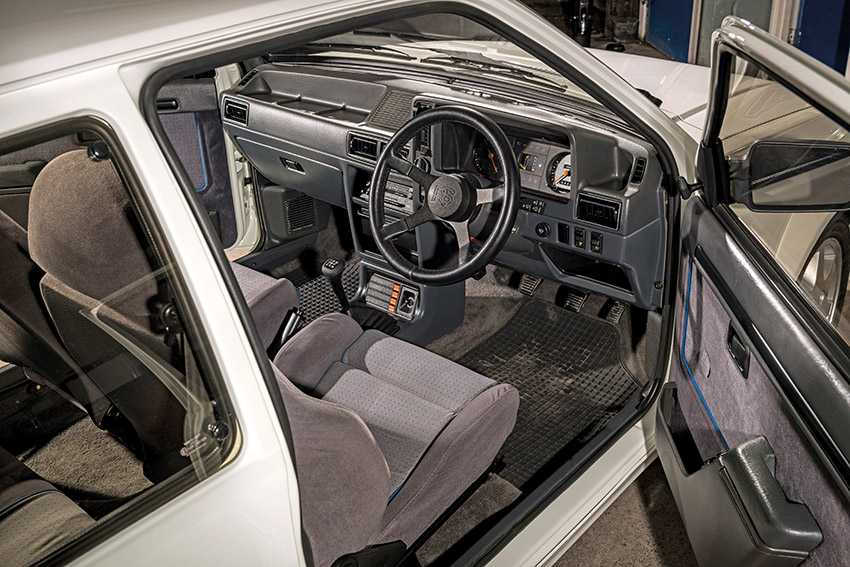
Interior
If you’re paying top dollar for an RS Turbo, it’s vital to see an immaculate interior. Even though most of the cabin trim was shared with the Mk3 XR3i (Monza upholstery with blue piping), it’s hard to find in mint condition because it’s not hard-wearing; naturally, it’s very desirable and equally pricey.
Only the RS Turbo’s Recaro front seats differed from the XR3i’s (albeit wearing the same cloth), but they tend to wear out on the bolsters, sag on the bases and collapse underneath. The winders also loosen, although repairs are straightforward. Check the driver’s seat hasn’t been replaced with a passenger-side Recaro to disguise wear.
Ensure the door cards aren’t damaged or cut for speakers. Beware of cracks, splits and warping in the dashboard, or you’ll need to spend a four-figure sum – and a long time searching – for a mint replacement. Inspect the parcel shelf too; speakers and sagging knocks down the value.
Several Series One owners have a second interior (one for shows, one for the rest of the year), so try to get those rare parts included in a deal. If not, gather spares when you see them and store them in a safe place.
If your Ford Escort RS Turbo S1 has the optional (but usual) Custom Pack, check the electric windows and central locking work properly because motors tend to pack up. Indicator stalks and dashboard switches are fragile, but they’re shared with base-model Mk3s, so don’t tend to be overly expensive or hard to source.
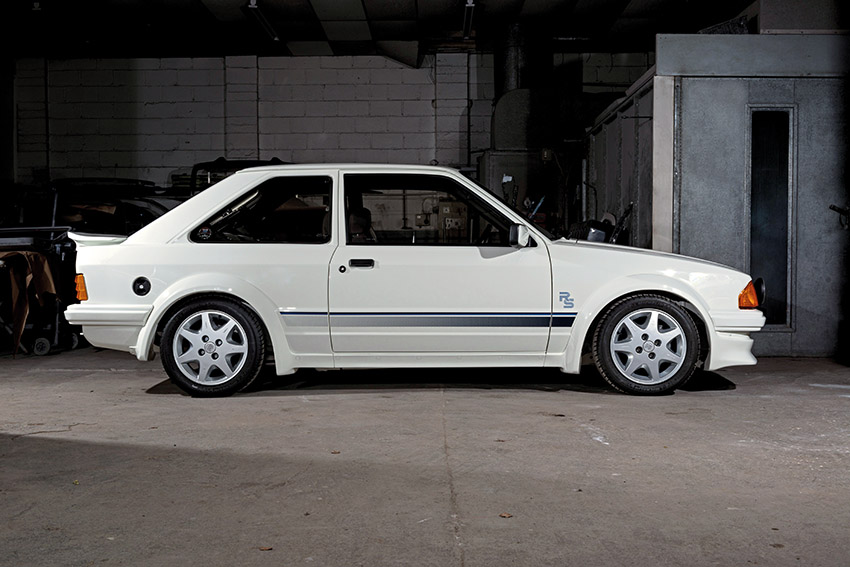
Exterior
Rotten RS Turbos are still out there – usually sold as projects and barn finds, but occasionally masquerading as mint or restored cars. Many rusty or damaged RSs have also been reshelled into second-hand standard Escort three-door bodyshells, now worth considerably less cash – so beware.
Corrosion can attack an Escort virtually anywhere. Have a good look around the front panel edges, bonnet, front wings, outer sills, door edges, A-pillars, rear wheelarches, fuel filler, tailgate, and around the sunroof of any Custom Pack; blocked sunroof drains tend to result in rusty rear quarters, while the sunroof frame rusts where the glass bonds, and NOS sunroofs are breathtakingly pricey.
Jack up the car to inspect the floorpan, chassis rails (particularly towards the rear), front crossmember, rear valance and boot floor. Lift the bonnet to check the suspension turrets, inner wings, bulkhead, battery tray and fuse box area. If possible, look at the bulkhead from inside the cabin by removing the glovebox. Feel the carpets for dampness (raise them if you can, paying particular attention to the inner sills), lift the back seat and rear quarter panels to check the rear wheelarches for moisture.
Within the boot, inspect the wheel well and chassis rails from above – finding rot here means it’s already quite extensive. The boot floor is also typically a place to spot creases or cracks caused by previous accident damage.
Take note of the seam sealer on the rear quarters and the front wings, which should have a factory-applied finish, which is difficult to replicate during repairs.
If you’re intending on a concours restoration, you’ll need to search hard for genuine Ford body panels, although good-quality reproductions are available. The Series One bodykit isn’t difficult to source, but check the wheelarch extensions aren’t cracked. The grille was shared with the first-generation Orion, while towing eye covers and decals are available as reproductions. Bumper overriders were shared with the Escort Ghia, but tend to be hard to find and comparatively pricey.
Driving lamps and brackets are expensive, so make sure they work and aren’t broken. Other lights were fitted to lesser Mk3 Escorts, but don’t be surprised to see them working erratically because old Fords are prone to bad earths and corroded connectors; cleaning the contacts and treating rust is the usual cure.
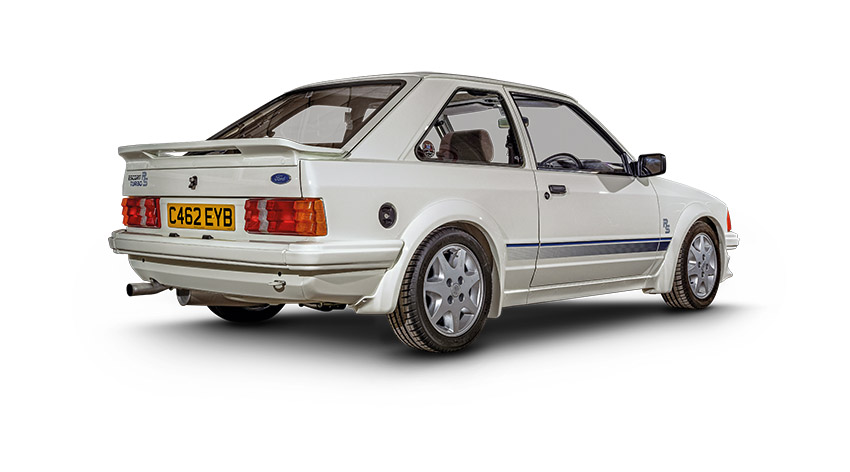
Ford Escort RS Turbo S1 prices
Project: £8000 to £15,000 – Beware of ‘barn finds’, which for this money may be rotten, half-stripped of the good bits, or decidedly dodgy. Don’t splash out if the identity is questionable.
Good: £15,000 to £25,000 – Useable Series Ones are now serious cash, so expect to see mileage of 100,000 or more, along with sensible modifications and maybe some missing factory-original parts. Don’t get spendy on a fake or replica.
Concours: £25,000 to £50,000-plus – Show-worthy S1s have rocketed in value on the heels of three-door Cosworths, and low-mileage examples have sold for north of £60k. For that much it needs to be mint and completely standard, but £35k should bag an RS with about 70,000 on the clock.
Ford Escort RS Turbo S1 images
Tech Spec: Ford Escort RS Turbo S1
Engine:
1596cc in-line four-cylinder, eight-valve, SOHC CVH with cast-iron block and alloy head, Bosch KE-Jetronic fuel injection, Bosch-Motorola management, Garrett T3 turbocharger
Transmission:
Front-wheel drive with B5 five-speed manual gearbox with 4.27:1 final drive ratio, viscous-coupling limited-slip differential, 7.9in single-plate clutch
Suspension:
Front: MacPherson struts, Girling gas-filled dampers, XR3i coil springs, separate 16mm anti-roll bar with RS1600i-style tie-bars, solid inner mounting bushes; rear: transverse trailing arms, telescopic dampers, XR3i coil springs and 12mm anti-roll bar
Brakes:
Front: 239mm ventilated discs with heavy-duty pads; rear: 203mm drums with heavy-duty linings
Wheels & Tyres:
6x15in seven-spoke Ford RS alloys and Michelin MXV 195/50VR15 tyres
Exterior:
Three-door Escort hatchback body with bronze tinted glass, opening rear quarter windows, long-range driving lamps, body-coloured front spoiler, wheelarch extensions, side skirts, XR3 rear spoiler and Orion grille. Finished in Diamond White with RS graphics (except three built in factory Black). Custom Pack added manual tilting/sliding glass sunroof, electric front windows and central locking
Interior:
Recaro front seats in grey Monza trim with XR3i rear bench, door cards and three-spoke steering wheel. Optional ECU1 stereo

